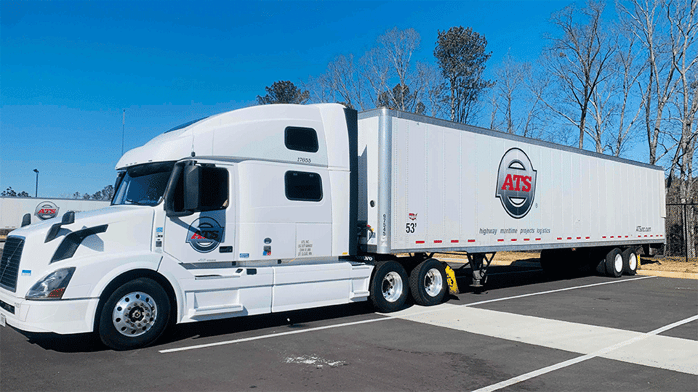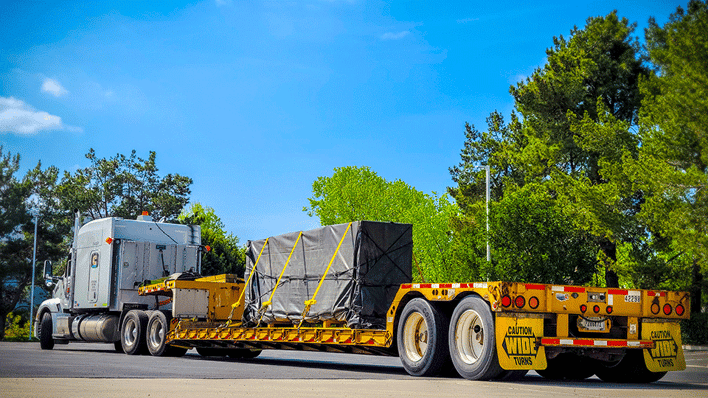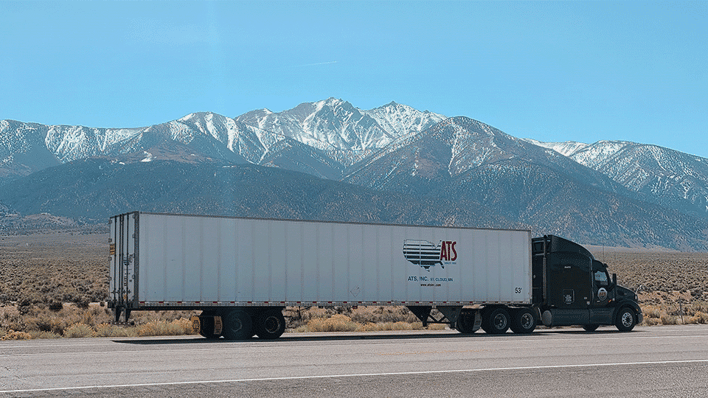
- How the dry van and reefer marketplace shifts in May
- How open-deck capacity changes in May
- How over-dimensional freight moves change in May
- What to know about DOT Blitz Week
- Memorial Day weekend best practices for shippers
Where transportation is concerned, May signals a grand reopening nationwide. Produce season steadily ramps up across the southern U.S. and the construction industry’s freight demands are in full swing.
Failing to plan for the transportation shifts that occur around our nation during May leaves many shippers at a disadvantage, underprepared for May’s capacity crunch and surprised by spot rates.
Here at Anderson Trucking Service (ATS), we’ve been navigating the transportation industry for 70 years. During this time, we’ve seen how important it is for shippers to approach each month with proactivity and a plan.
In this article, we’ll break down exactly what May 2025 means for transportation capacity so that you can plan your shipments accordingly.
With this information — and our best tips for overseeing your freight successfully this month — in your back pocket, managing your supply chain during May will be easier and less stressful.
Dry Van and Reefer Freight Movement in May 2025
Starting in the waning days of April each year and continuing well into May, dry van and reefer trucking companies — which are already responsible for transporting many commodities like food, beverages, and general merchandise year-round — see an uptick in demand for their services.
In the southern half of the U.S., harvest season steadily increases the volumes of produce moving around the nation all summer long.
Since fresh produce has a definitive expiration date, it’s crucial that plenty of dry van and reefer capacity is readily available in harvesting areas.
Drivers pulling dry vans and reefer trailers are naturally drawn to the heightened demand in states like Florida, Georgia, South Carolina, Texas, and California, so expect truck capacity to shift away from more northerly states and toward southern states throughout May.
If you’re shipping to a southern destination in May, you may be in luck — trucks will be much easier to find going into the southern U.S. right now than they will going out.

But even if your cargo won’t get drivers into those produce hotbeds, you can still expect to see a relaxed rate to move dry van and reefer freight in those regions.
Unfortunately, securing capacity away from these demand-rich regions will typically cost a bit more in May.
It’s hard to entice drivers away from the certainty of hauling produce season loads. To turn these reluctant drivers’ heads, freight rates will increase.
We often see the overall market tighten as produce harvest and distribution soaks up much of the overall dry van capacity — capacity that would otherwise help shippers across industries.
For this reason, expect to see some capacity constraints when moving dry van cargo around these areas of the country throughout May 2025.
Open-Deck Transportation in May 2025
May is the first month when weather across the northern U.S. substantially stabilizes. As a result, the various projects that couldn’t be accomplished from November to April are kick-started in May.
Road construction, building improvements, and infrastructure projects, among many others, start moving this month.
With a short window to complete these projects before cold weather returns, contractors and project managers need open-deck capacity now — like, seriously, right now.
For this reason, it’s not uncommon for the open-deck transportation market to tighten across the board during May. Shippers jostle for limited trailer space in states like North Dakota, Minnesota, Montana, and Iowa.
Meanwhile, outbound raw materials and equipment originating in areas like Texas and the southeast begin making their way toward job sites and retailers elsewhere in the country.
What does that mean for you? To get your open-deck cargo moved as cost-effectively as possible this month, make sure to give your carriers 24 to 72 hours of lead time before your freight needs to load. Doing so will help them ensure the absolute best-fit solution for your shipping needs.
Over-Dimensional (OD) Freight Movement in May 2025
Construction and agriculture equipment and machinery will start moving with greater regularity in May.
Frost laws limit the total weight carriers can haul on certain roadways to prevent infrastructure damage during spring thaw. The frost laws governing roadways across the northern U.S. and Canada begin to wane in most states in May. Once they’re no longer in effect, oversized freight can travel as it normally would in those areas.
But even after frost laws are in your rearview mirror, it may still be difficult to source a solution for your oversized cargo this May.
Recently, open-deck freight rates have risen to levels that directly compete with oversized freight rates. In turn, drivers that would normally haul oversized products have opted instead to haul legal cargo.
That means securing a driver to haul oversized freight might be more challenging — and costly — in general. If you have OD freight to move right now, expect to pay a bit more.
DOT Blitz Week May 13-15
The Commercial Vehicle Safety Administration (CVSA)’s annual International Roadcheck, often called Blitz Week, is an annual initiative that takes place annually in late spring or early summer.
Blitz Week 2025 will start Tuesday, May 13, and end 72 hours later on Thursday, May 15. During this period, capacity will tighten as local, area, and highway law enforcement officers seek to pull over and check commercial motor vehicles.
For this reason, many drivers opt to avoid moving freight over these 72 hours.
Navigating the capacity crunch and rate hikes that accompany Blitz Week will take proper planning. If possible, we recommend shipping before or after May 13-15, but not during.
If your deadlines won’t allow you to make this scheduling adjustment, your next best bet is to give carriers plenty of lead time to secure a solution. 24 to 72 hours of notice before your shipment needs to load is typically sufficient.

Planning Around Memorial Day Weekend
Moving freight on or around a national holiday is never easy. Businesses and facilities close up shop, and drivers (understandably) would rather be home with their families, making it difficult to secure capacity at competitive price points.
Memorial Day 2025 is Monday, May 26. Any time a holiday creates a long weekend, it drives up the cost to move freight over that period.
Long weekends can cause situations in which a driver picks up on Friday and delivers on Tuesday, as that’s the next day consignees will be open.
Instead of maximizing their hours of service and delivering your shipment as soon as they arrive, long weekends force drivers to “sit” on your shipment. This prevents them from hauling other loads or going home to their families.
In short: Prepare to pay more to move cargo over Memorial Day weekend.
If you can’t avoid sending outbound shipments over this period, be sure to communicate with your consignees. Ask each receiver when they plan to be open for deliveries immediately before and after the long weekend.
If they will be staffed, ask them if your delivery could fit into their schedules. Getting your shipments in before the weekend will save you substantially.
On the other hand, if all of your receivers are closed, make sure to secure delivery appointments at their earliest convenience to avoid paying even more.
Ship Smarter This May
From produce season’s surge in reefer demand to open-deck capacity battles in the northern U.S., May brings a flurry of changes to the freight market, many of which can catch shippers off guard if they’re not planned for in advance.
Now that you know what to expect from dry van, reefer, open-deck, and oversized freight movement this May — not to mention the curveballs Blitz Week and Memorial Day tend to throw — you’re in a better position to keep your freight moving efficiently and cost-effectively.
This kind of market awareness gives you a real edge: When others scramble for capacity or get surprised by rate hikes, you’ll already be executing a well-informed plan.
Need help putting that plan into action? Download our free Find a Truck Faster Guide for more strategies and insights to help you secure the right truck at the right time — no matter the market conditions.





